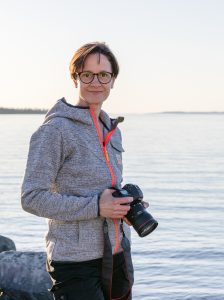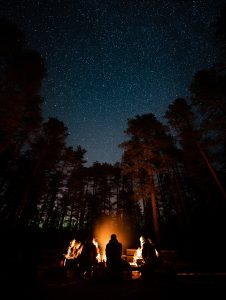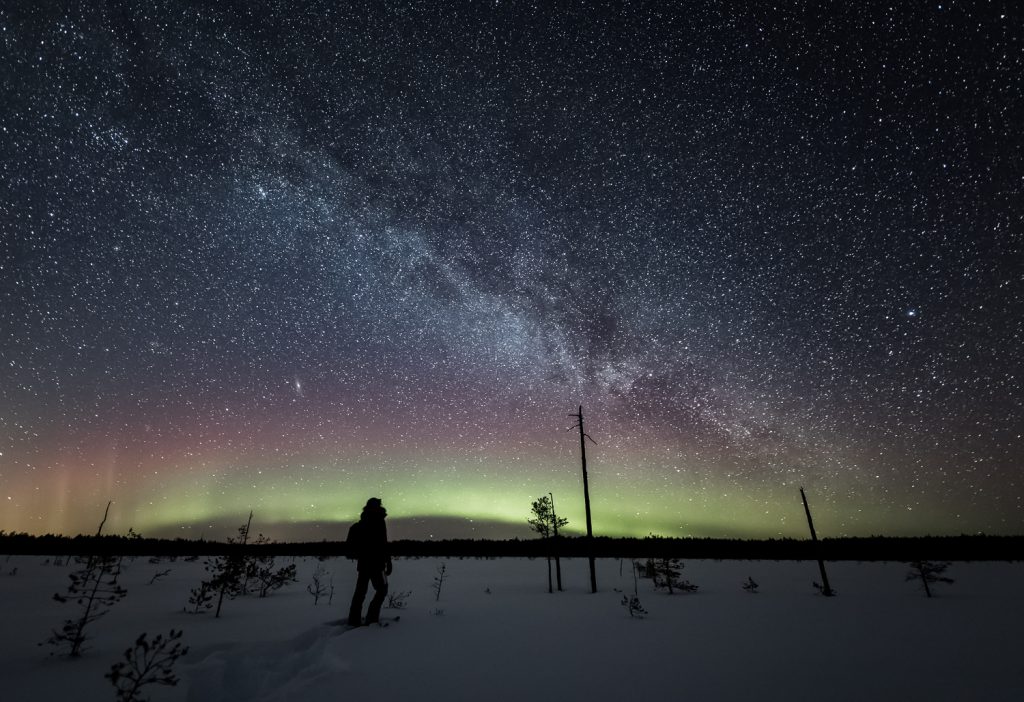Author: Satu Juvonen, North Karelia
(translations: Lasse Okkonen, Rosalind Bryce)

Satu Juvonen, Photographer.
In the lights of our headlamps, we follow the snowy tracks taking us to the shores of Lake Suomujärvi at Patvinsuo National Park. It is a late winter evening, dark has just fallen and we can already observe the stars of the Big Dipper. Some of the friends have their camera with a stand, some with binoculars, some without anything, just the senses open.
We walk slowly toward the peninsula close by, wearing our thick winter clothes. Like penguins, we wobble to our target, and turn off our lights. Slowly our eyes get used to the dark. We are for a moment in quiet and calm; some of us lay on the snow crust. The night gets colder, the trees are rustling at the forest, and the ice of the lake is gives a ghostly noise after a sunny day.
It is the time of the new moon, the darkness of the sky is deepening. Jupiter shines brightly in the south, and The Milky Way curves in the northern sky. The number of stars makes us quiet. We look for star patterns and see some falling stars. Low on the northern horizon radiate the faint northern lights; at this moment, activity is low – despite perfect timing as the vernal equinox is close by.
Freezing hands and toes moves our thoughts to the hot drinks waiting. We soon find ourselves at the campfire, the magic circle of living fire.

Copyright: Satu Juvonen.
North Karelia, Finland, provides dark areas for stargazing and night photography. Close to the Finnish-Russian border at Patvinsuo and Ruunaa there are areas without light pollution, i.e. areas with a score of 2 on the nine-level Bortle Dark Sky scale. In Russia, at the other side of the border, there are vast areas without or with minor residential and industrial areas.
On the western horizon, are the lights of Lieksa and Uimaharju industries. However, even these lights are not too bright and their impact remains quite low on the horizon. I photograph a lot of the night sky over Patvinsuo National Park. The brighter end of The Milky Way is visible in the northern sky in late winter in March, sometimes accompanied by the northern lights. On bright nights, the northern lights may be visible in North Karelia. However, they are often quite faint and low, so they should be observed from open and dark areas.
The dark time for observing the sky starts from October and continues to March. Also in bright summer nights, the sky offers things to see: the rise of moon to the twilight is magical; an experience of which you will never tire. Midsummer nights with their soft light are so beautiful you would like not to close your eyes. In July-August, you may see the noctilucent clouds. Floating high, at the borders of sky and space, the noctilucent clouds are a fascinating phenomenon and nice to photograph. Their gentle light in the twilight of summer night is something unique.

Copyright: Satu Juvonen.
Shapingecotourism website has several Satu’s pictures as banners and visual layout. Please visit Instagram to enjoy more of these images.


